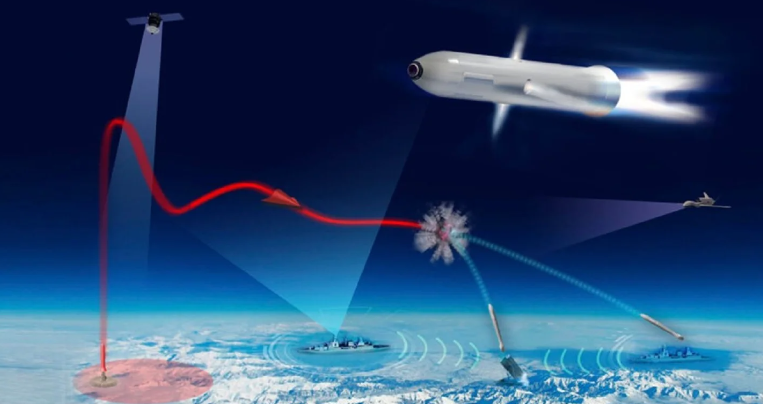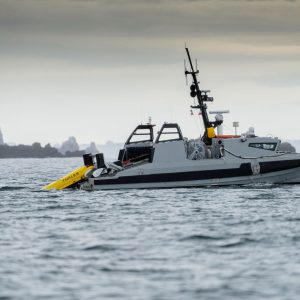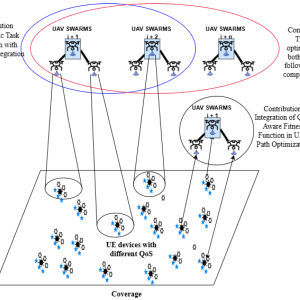In recent news, OCCAR signs a hypersonic interceptor contract. The Organisation for Joint Armament Cooperation (OCCAR) has made a significant stride in the field of hypersonic technology by signing a groundbreaking contract for the development of a Hypersonic Interceptor. This development marks a pivotal moment in the world of defence and aerospace, with far-reaching implications for global security and military capabilities.

The Genesis of Hypersonic Technology
To appreciate the significance of this contract, it’s essential to understand the foundations of hypersonic technology. Hypersonic weapons and interceptors are a class of weaponry that can travel at speeds exceeding Mach 5, or five times the speed of sound. These incredible velocities provide a crucial advantage on the battlefield, as they reduce reaction time and enhance the effectiveness of defence systems.
Hypersonic technology represents a fusion of cutting-edge engineering and scientific advancements. It harnesses the principles of aerodynamics, propulsion, and materials science to achieve these astonishing speeds, and it has applications in both offensive and defensive military strategies.
The HyDef Initiative
The contract signed by OCCAR is part of the broader HyDef (Hypersonic Defense) initiative, which aims to develop robust defence systems against hypersonic threats. HyDef recognizes the growing prominence of hypersonic weapons in modern warfare and seeks to ensure that nations are well-prepared to counter these formidable threats.
The development of a Hypersonic Interceptor is a key pillar of the HyDef initiative. This interceptor will be designed to track, engage, and neutralize hypersonic missiles and vehicles, providing a critical layer of defence for national security.
Key Players and Collaborations
To bring the Hypersonic Interceptor from concept to reality, OCCAR is collaborating with a network of leading defence and aerospace organizations. These include established industry giants and research institutions renowned for their expertise in hypersonic technology.
The collaborative effort ensures that the development of the Hypersonic Interceptor leverages the best available knowledge, technology, and resources in the field. It also fosters international cooperation in defence research, promoting stability and security on a global scale.
Technological Advancements in Hypersonic Interceptors
The development of a Hypersonic Interceptor represents the pinnacle of technological achievement in the field of aerospace and defence. Several key technological advancements make this project a game-changer:
1. Advanced Propulsion Systems
The Hypersonic Interceptor will be equipped with state-of-the-art propulsion systems designed to accelerate it to hypersonic speeds. These systems utilize cutting-edge materials and engineering techniques to withstand extreme temperatures and stresses.
2. Precision Targeting
One of the most remarkable features of the Hypersonic Interceptor is its ability to precisely target and engage hypersonic threats. This requires advanced guidance and tracking systems, which rely on a combination of sensors and artificial intelligence to make split-second decisions.
3. Materials Science Breakthroughs
The development of materials capable of withstanding the intense heat and pressure experienced during hypersonic flight is another critical aspect of this project. The Hypersonic Interceptor will utilize advanced composite materials that have been rigorously tested and optimized for these extreme conditions.
4. System Integration
Successful hypersonic defence requires the seamless integration of various components into a cohesive system. This integration is a complex task that demands the highest levels of expertise and precision in engineering.
Global Implications
The development of the Hypersonic Interceptor under the HyDef initiative has profound implications on a global scale. Here are some of the key aspects to consider:
1. Enhanced National Security
For participating nations, the Hypersonic Interceptor will significantly bolster their national security by providing an effective means to defend against hypersonic threats. This development ensures that their military capabilities remain on the cutting edge.
2. Deterrence
The presence of advanced hypersonic defence systems acts as a deterrence against potential adversaries. The knowledge that a nation possesses the means to counter hypersonic threats can discourage hostile actions and contribute to regional and global stability.
3. International Collaboration
The collaboration between multiple nations on the HyDef initiative fosters diplomatic ties and promotes peaceful cooperation. It’s an example of how the defence and aerospace industry can serve as a catalyst for international relations.
4. Competitive Advantage
By spearheading the development of the Hypersonic Interceptor, participating nations gain a competitive advantage in the global defence market. This can lead to economic benefits and the creation of high-skilled jobs in the aerospace and defence sectors.
The Future of Hypersonic Defense
As the HyDef initiative advances and the Hypersonic Interceptor project takes shape, the world will be watching with anticipation. The development of this advanced technology represents a significant milestone in the realm of defence and aerospace, promising a safer and more secure future.
In conclusion, OCCAR’s signing of the contract for the Hypersonic Interceptor is a momentous event in the ongoing evolution of hypersonic technology and defence. This project showcases the commitment of nations to maintain their security in the face of emerging threats, and it underscores the critical role of international collaboration in achieving these goals.
The HyDef initiative is not only about developing advanced technology but also about forging stronger bonds between nations. The world can look forward to a future where hypersonic threats are met with cutting-edge defence systems, where diplomacy prevails, and where global security is enhanced.
In a rapidly changing world, the development of the Hypersonic Interceptor offers a glimmer of hope for a safer and more secure future, driven by innovation and cooperation. It is a testament to human ingenuity and the unwavering pursuit of peace through strength.










